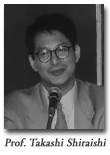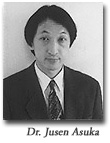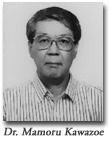 |
| Newsletter |
|
|
||
|
|
||
|
1998
Research Outcome 1. Japan's
Role in Asia
For the past 50 years, Asia's order basically pivoted around the hegemony of the United States, both in international politics and economics. The regional system, not only in regional security but also in economics and trade, was a tri-polar system among Southeast Asia, Japan, and the USA, with China entering the system in 1980's. Japan's basic approach toward Asia was best described in the phrase "Asia and Japan", indicating only a weak integration between Asia and Japan. After the Plaza Accord, however, Yen's evaluation prompted the Japanese manufacturing sector to pour into the markets of South East Asia and China's coastal states, further strengthening the integration with the Asian market. In the case of Germany, its position in Europe has been "Germany in Europe", symbolizing Germany's deep involvement in European systems and economies. Now, Japan seems to be taking the same path of blending into Asia, in other words, "Japan in Asia", or what we call Greater Japan, because of the Japanese manufacturers' successful penetration of the Asian market in the past decade. The Japanese Government's policies toward Asia, however, do not seem to conform to the reality of Greater Japan. They still maintain the traditional "Asia and Japan" approach focusing on exclusive benefits to Japan. The Research Committee to Study Japan's role in Asia reviewed policies that could conform to the reality of Greater Japan and examined overall conformity plus a long term strategy of Japanese policies, from view points. What are the consensus built as the basis for a strategic planning? One consensus is that the policies must be based on an open and fair system using the two languages of Japanese and English. A second consensus is the need to build a network system, including capacity building and technological cooperation. To build a network system will require monitoring, broader information gathering, and analytical capacity improvement. 2.
Environmental Technology Transfer to Asian Region
The Committee focused on environmental technology transfer to China. Environmental technology transfer is fundamentally different from manufacturing technology transfer, such as television manufacturing. TV manufacturing technology transfer is usually conducted by private sector direct investment, but ODA is the main vehicle of environmental technology transfer. This is because economic incentives do not work for environmental technology transfer. Introduction of Japan's expensive environmental technology to China is not profitable. This type of technology transfer requires public policy support initiated by bureaucrats. In other words, it is necessary to build awareness on how environmental technology transfer with no apparent economic benefits is essential and beneficial for both China and Japan, and why public funds such as ODA are needed to conduct such transfer. First, we must develop a common consensus among researchers of both countries and then communicates such consensus to politicians. By explaining how environmental technology transfer will eventually raise economic benefits to China, Japanese diplomacy may find some accountability in its policies. The Committee's report describes the current situation of power generation technologies in Japan, including nuclear power generation technology, and suggests the potential of such technologies to prevent acid rain and to reduce GHG emissions, indicating the possibility of Japan contributing to the international community. The continued economic growth of China is causing serious and ongoing environmental problems in that country. Their polluters seem to be the companies which lack any financial or technological capacity to prevent pollution. The Chinese central government has started to realize the importance of environmental issues, but their local governments and businesses have not yet adopted any concrete environmental measures. As environmental issues in the past fostered the emergence of environmental industry in Japan, if environmental industry develops in China bringing profits from environmental measures, China-Japan cooperation can be developed at the private investment level, as well. What is needed is a growing consensus on environmental issues between the two countries by utilizing the ODA fund to develop profits from environmental measures. 3.
High-tech Industry in Russia and Japan-Russia Relationship
Russia can be characterized as a developed country in science and a developing country in technology. This is due to their political background which used to emphasize defense industries in their industrial structure. During Khrushchev's regime, space industry and arms industry peaked in their development. Two Oil Crises created a large capital flow into Russia as one of major oil producing countries, and the profits from oil production was invested to fund the defense industry. Military technology was fundamentally a national secret, and did not develop into industrial technologies nor disseminate into the private sector. The western world including Japan, by contrast, moved toward energy saving and electronization after the Oil Crisis and changed its industrial structure. After the Oil Crisis, Russia penetrated Afghanistan and received economic sanctions from the outside world, widening the gap with the western world. Even now, Russia is not well advanced in its military-to-private sector transition. Russia has technologies that can contribute to world peace and human welfare. For example, their natural gas power generation technology is favored as clean energy in transition to nuclear fusion technology. Other Russian high techs include the technology of helium separation from natural gas leading to the advancement in superconductivity technology and fuel cells. Mini-nuclear power stations will likely materialize within 15 years for the purpose of greenhouse gas emission reduction, and laser technology, a Russian innovation, presents large application potentials. Cooperation between Japan and Russia still remains low key at the national and private sector levels, compared with Japan's cooperative framework with other regions. Both countries are even farther away in their psychological distance. In order to change the current situation and promote cooperative systems between the two countries, it is necessary to achieve political agreement between the top leaders of both countries. The Hashimoto-Yeltsin plan designates the action areas, such as the cooperative investment initiative, loans to support economic restructuring, trade insurance, aid for small to medium size companies, and cooperation in energy and environmental fields. In order for such decision making to materialize, both Japan and Russia need to develop a framework for sharing and exchanging information. By combining Russia's advances in science and Japanユs sophistication in technology, we can add a page of hope to the scenario of the 21st century. |
||
|
|


